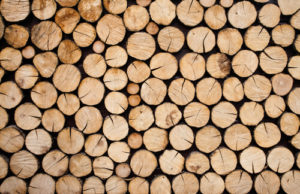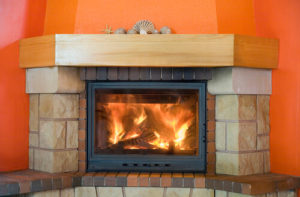Enhance Fireplace Efficiency and Style
Did you know that if you have a problem with your fire, it may not be a problem with your fireplace or chimney? If you have trouble with your chimney system, and it has been checked for safety, cleanliness, and function, there is probably another issue.
Burning Properly Seasoned Wood
Your wood-burning fireplace, stove, or insert is designed to burn properly seasoned wood only. When you use the wrong fuel, the fire doesn’t burn properly and the chimney won’t work properly.
Signs you’re burning the wrong wood:
- The system requires frequent cleaning
- An excess of ash due to incomplete burning
- Dark blue/gray smoke from the chimney
- Small flame
- Blackened glass/window on stove or fireplace
- Smoky fireplace even while damper is fully open
- More wood required to reach a desired temperature
When you burn the correct wood, you should see a hotter fire, a bigger flame, and thinner smoke. It will take less wood to reach the same temperature, saving you resources, time, and energy (hauling, cutting, stacking wood). When you burn properly seasoned wood, you will find there is less creosote and soot buildup inside the chimney flue, because the air is hot enough to drive it up and out of the chimney system. There will be less particulate pollution to pollute the environment and less necessary cutting from the environment. In all, you will save big when you burn the right fuel in your wood-burning fireplace.
Choosing the Right Wood
Not all woods are created equal. Some trees are much harder than others, and how hard they are will determine how long your wood should sit and season before it’s burned. Trees live and grow using water, and their trunks and branches are filled with tiny vein-like tubes that hold water. When you cut the tree down, or when your supplier cuts it down, these tubes are still filled with water. If you let the whole tree sit, it may take years for tubes to dry, if ever. But if you cut the wood and let it sit, it will dry in a matter of months, and will be ready to burn efficiently.
Hard woods have a higher heat output than soft woods, but require longer to season (6-12 months). Softer species of wood can season in a shorter amount of time (3-6 months), but will burn faster and with less heat output. Which you use will depend on availability and personal need. If you use a fireplace occasionally, you may not be picky about the type of wood you use, but you should be picky about the quality of wood you choose.
Check Your Wood Before You Burn!
Even if you buy your wood, you can make sure it’s seasoned by looking it over before you buy. It should be dull in color, light in weight, the bark should pull away from the wood with cracks along the edges of the wood, and produce a hollow noise when hit together.
The wood you burn plays a big part in how your chimney functions! Revitalize your fire by burning the correct fuel! If you still have chimney problems, ask a professional at Chief Chimney Services. Call 631-863-2460 today.

